#billaud-varennes
Text
Some primary sources
I plan to add more whenever I find more.
Historie Parlamentaire de la Révolution Française ou Journal des Assemblées Nationales, depuis 1789 jusqu’en 1815
Volume 1 (May 1789)
Volume 2 (June-September 1789)
Volume 3 (September-December 1789)
Volume 4 (December 1789-March 1790)
Volume 5 (March-May 1790)
Volume 6 (May-August 1790)
Volume 7?
Volume 8 (November 1790-February 1791)
Volume 9 (February-May 1791)
Volume 10 (May-July 1791)
Volume 11 (July-September 1791)
Volume 12 (September-December 1791)
Volume 13 (January-March 1792)
Volume 14 (April-June 1792)
Volume 15 (June-July 1792)
Volume 16 (July-August 1792)
Volume 17 (August-September 1792)
Volume 18 (September 1792)
Volume 19 (September-October 1792)
Volume 20 (October-November 1792)
Volume 21 (November-December 1792)
Volume 22 (December 1792-January 1793)
Volume 23 (January 1793)
Volume 24 (February-March 1793)
Volume 25 (March-April 1793)
Volume 26 (April-May 1793)
Volume 27 (May 1793)
Volume 28 (July-August 1793)
Volume 29 (September-October 1793)
Volume 30 (October-December 1793)
Volume 31 (November 1793-March 1794)
Volume 32 (March-May 1794)
Volume 33 (May-July 1794)
Volume 34 (July-August 1794)
Recueil des actes du comité de salut public
Volume 1 (August 12 1792-January 21 1793)
Volume 2 (January 22-March 31 1793)
Volume 3 (April 1-May 5 1793)
Volume 4 (6 May-18 June 1793)
Volume 5 (19 June-15 August 1793)
Volume 6 (15 August-21 September 1793)
Volume 7 (22 September-24 October 1793)
Volume 8 (25 October-26 November 1793)
Volume 9 (27 November-31 December 1793)
Volume 10 (1 January-8 February 1794)
Volume 11 (9 February-15 March 1794)
Volume 12 (16 March-22 April 1794)
Volume 13 (23 April-28 May 1794)
Volume 14 (29 May-7 July 1794)
Volume 15 (8 July-9 August 1794)
Recueil de documents pour l’histoire du club des Jacobins de Paris
Volume 1 (1789-1790)
Volume 2 (January-July 1791)
Volume 3 (July 1791-June 1792)
Volume 4 (June 1792-January 1793)
Volume 5 (January 1793-March 1794)
Volume 6 (March-November 1794)
Histoire du tribunal révolutionnaire de Paris: avec le journal de ses actes.
Volume 1
Volume 2
Volume 3
Volume 4
Volume 5
Papiers inédits trouvés chez Robespierre, Saint-Just, Payan etc
Volume 1
Volume 2
Volume 3
Oeuvres complètes de Robespierre
Volume 1 (Robespierre à Arras)
Volume 2 (Les œuvres judiciaires)
Volume 3 is the correspondence, listed below
Volume 4 (Le defenseur de la Constitution)
Volume 5 (lettres à ses comettras)
Volume 6 (speeches 1789-1790)
Volume 7 (speeches January-September 1791)
Volume 8 (speeches October 1791-September 1792)
Volume 9 (speeches September 1792-June 27 1793)
Volume 10 (speeches June 27 1793-July 27 1794)
Oeuvres de Maximilien Robespierre (not the same as Oeuvres completés)
Volume 1
Volume 2
Volume 3
Oeuvres de Jerome Pétion
Volume 1
Volume 2
Volume 3
Volume 4
Oeuvres complètes de Saint-Just
Volume 1
Volume 2
Oeuvres littéraires de Hérault de Séchelles (1907)
Oeuvres de Danton (1866)
Discours de Danton (1910) by André Fribourg
Works by Desmoulins
La France Libre (1789)
Discours de la Lanterne aux Parisiens (1789)
Révolutions de France et de Brabant (1789-1791)
Volume 1 (number 1-13)
Volume 2 (number 14-26)
Volume 3 (number 27-39)
Volume 4 (number 40-52)
Volume 5 (number 53-65)
Volume 6 (number 66-79)
Volume 7 (number 80-86)
La Tribune des Patriots (1792) (all numbers)
Le Vieux Cordelier (1793-1794) (all numbers)
Jean Pierre Brissot démasqué (1792)
Histoire des Brissotins (1793)
Correspondences
Correspondance de Maximilien et Augustin Robespierre (1926)
Correspondance de George Couthon (1872)
Correspondance inédit de Camille Desmoulins (1836)
Correspondance inédite de Marie-Antoinette (1864)
Billuad-Varennes — mémoires et correspondance
Correspondance de Brissot
Lettres de Louis XVI: correspondance inédite, discours, maximes, pensées, observations etc (1862)
Lettres de Madame Roland (1900)
Volume 1
Volume 2
Correspondance inédite de Mlle Théophile Fernig (1873)
Journal d’une bourgeoise pendant la Révolution 1791-1793 by Rosalie Jullien (1881)
Memoirs
Memoirs of Bertrand Barère
Volume 1
Volume 2
Volume 3
Volume 4
Memoirs of Élisabeth Lebas
In French
In English
Mémoires de Charlotte Robespierre sur ses deux frères (1835)
In French
In English
Memoirs of Joseph Fouché
Volume 1 (English)
Volume 2 (French)
Mémoires de Brissot (1877)
Mémoires inédits de Pétion et mémoires de Buzot et Barbaroux (1866)
Memoirs of Barras — member of the Directorate (1899)
Mémoires inédits de madame la comtesse de Genlis depuis 1756 jusqu’au nos jours
Volume 1
Volume 2
Volume 3
Volume 4
Volume 5
Volume 6
Volume 7
Volume 8
Volume 9
Volume 10
Mémoires de Madame Roland
Volume 1
Volume 2
Mémoires de Louvet (1862)
Memoirs of the Duchess de Tourzel: Governess to the Children of France During the Years 1789, 1790, 1791, 1792, 1793 and 1795
Volume 1
Volume 2
Révélations puisées dans les cartons des comités de salut public et de sûreté générale, ou Mémoires (inédits) de Sénart, agent du gouvernement révolutionnaire (1824)
Free books
Danton (1978) by Norman Hampson (borrowable for an hour, renewable every hour)
Robespierre (2014) by Hervé Leuwers (borrowable for an hour, renewable every hour)
Collot d’Herbois — légendes noires et Révolution (1995) by Michel Biard
Choosing Terror (2014) by Marisa Linton
The Coming of the Terror in the French Revolution (2015) by Timothy Tackett
Augustin: the younger Robespierre by (2011) by Mary-Young
Journaliste, sans-culotte et thermidorien: le fils de Fréron, 1754-1802, d’après des documents inédits (1909) by Raoul Arnaud
Un Champion de la Royauté au début de la Révolution - François Louis Suleau (1907)
Part 1
Part 2
Part 3
Part 4
Camille Desmoulins and his wife — passages from the history of the dantonists (1876) by Jules Claretie
Vadier, président du Comité de sûreté générale sous la Terreur d’après des documents inédits (1896) by Albert Tournier
Mémoires historiques et militaires sur Carnot (1824)
Le Puy-de-Dôme en 1793 et le Proconsulat de Couthon (1877) by Francisque Mège
Le procès des Dantonistes, d'après les documents, précédé d'une introduction historique. Recherches pour servir à l'histoire de la révolution française (1879) edited by Dr. Jean François Eugène Robinet
Robert Lindet, député à l'Assemblée législative et à la Convention, membre du Comité de salut public, ministre des finances : notice biographique (1899) by Amand Montier
Prieur de la Côte-d'Or (1900) by Paul Gaffarel
Un épicurien sous la Terreur; Hérault de Séchelles (1759-1794); d'après des documents inédits (1907) by Emile Dard
Twelve Who Ruled (1941) by R. R. Palmer (borrowable for an hour, renewable every hour)
Bertrand Barère: A Reluctant Terrorist (1963) by Leo Gershoy (borrowable for an hour, renewable every hour)
Saint-Just : sa politique et ses missions (1976) by Jean-Pierre Gross (borrowable for an hour, renewable every hour)
The Glided Youth of Thermidor (1993) by François Gendron
Pauline Léon, une républicaine révolutionnaire by Claude Guillon
Billaud-Varenne: Géant de la Révolution (1989) by Arthur Conte
When the King Took Flight (2003) by Timothy Tackett (borrowable for an hour, renewable every hour)
Joseph Le Bon, 1765-1795; la terreur à la frontière (1932) by Louis Jacob
Volume 1
Volume 2
Resources shared by other tumblr users (thank you all very much!!!)
Resources shared by @iadorepigeons
Resources shared by @georgesdamnton
Resources shared by @rbzpr:
Fabre d’Eglantine resources shared by @edgysaintjust
Saint-Just resources shared by @sieclesetcieux
Saint-Just resources shared by @orpheusmori
Marat resources shared by @orpheusmori
My own translations
Lucile Desmoulins’ diary (1788, 1789, 1790, 1792-1793)
Charlotte Robespierre et ses amis (1961)
Laponneraye on the life of Charlotte Robespierre (1835)
Abbé Proyart on the childhood of Robespierre (1795)
Regulations for the internal exercises of the College of Louis-le-Grand (1769)
Regulations for law students at Louis-le-Grand (1782)
Belongings left by Danton, Fabre and Desmoulins after their arrest
Letters from Robespierre’s father
Robespierre family timeline
#frev resources#frev#french revolution#maximilen robespierre#augustin robespierre#robespierre#george couthon#couthon#camille desmoulins#desmoulins#joseph fouché#fouché#charlotte robespierre#elisabeth lebas#elisabeth duplay#billaud-varennes#jerome Pétion#jacques-pierre brissot#saint-just
456 notes
·
View notes
Text


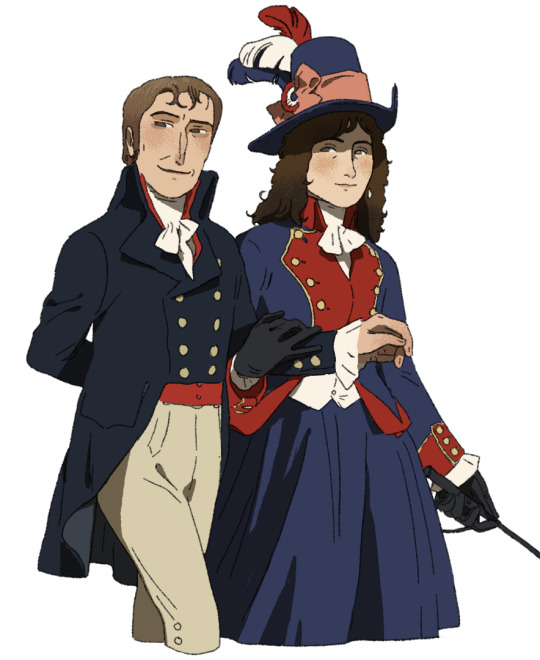
Happy Valentine's Day!
#french revolution#personal work#personal art#robespierre#saint just#charlotte robespierre#fouche#billaud varenne#collot d'herbois
742 notes
·
View notes
Text
I wonder if, being of a similar height to Robespierre, he ever had the same short-people-problems I sometimes have.
(although I admit I've never come against any 'intimidating your political opponents' problems)
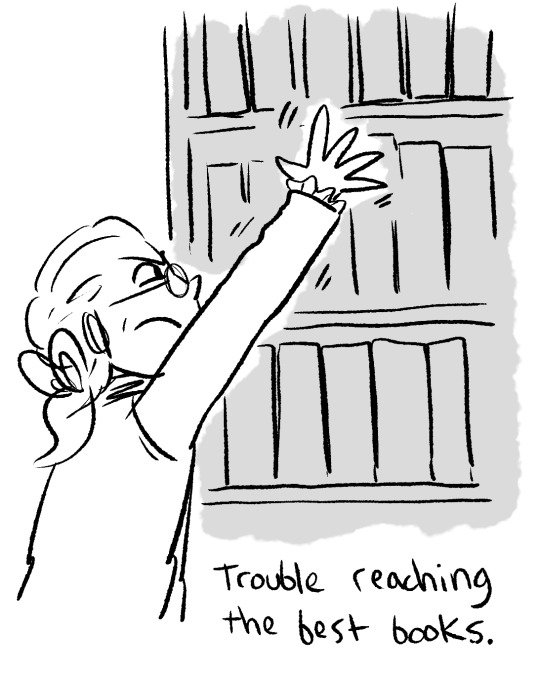
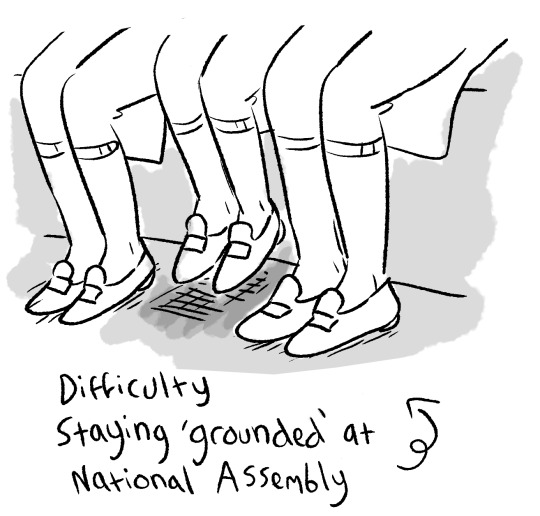


#apparently I'm only one inch shorter than robespierre#french revolution#frev art#frev shitposting#robespierre art#robespierre#maximilien robespierre#billaud varenne#french revolution art#frev doodle
148 notes
·
View notes
Text
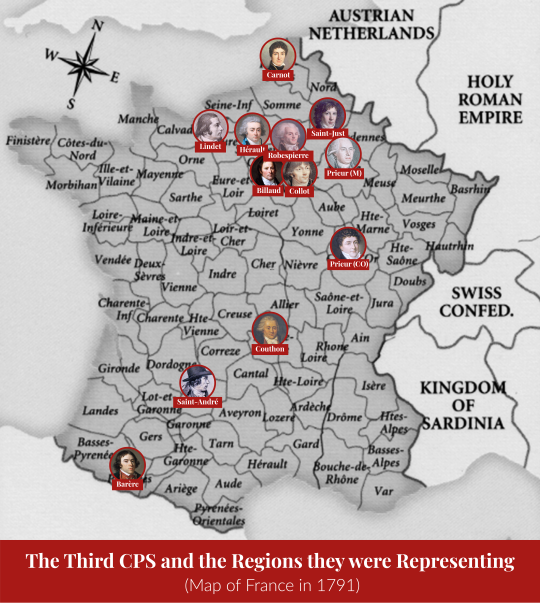
I am geographically challenged, and I really, really wanted a way to visualise what constituencies the members of the Third Committee of Public Safety ( July 1793 – July 1794) represented. So, this map was born.
Bertrand Barère: Hautes-Pyrénées
Jacques Billaud-Varenne: Paris
Lazare Carnot: Pas-de-Calais
Jean-Marie Collot: Paris
Georges Couthon: Puy-de-Dôme
Marie-Jean Hérault de Séchelles: Seine-et-Oise
Robert Lindet: Eure
Pierre-Louis Prieur de la Marne: Marne (hence the name…)
Claude-Antoine Prieur: Côte-d'Or (ditto)
Maximilien Robespierre: Paris
André Jeanbon Saint-André: Lot
Louis Antoine de Saint-Just: Aisne
PS: It’s fascinating and telling how many of them represented provinces in the north of France.
#frev#robespierre#french revolution#couthon#barere#collot#billaud varenne#herault#lazare carnot#saint just#saint-andre#Committee of Public Safety#priuer
76 notes
·
View notes
Text
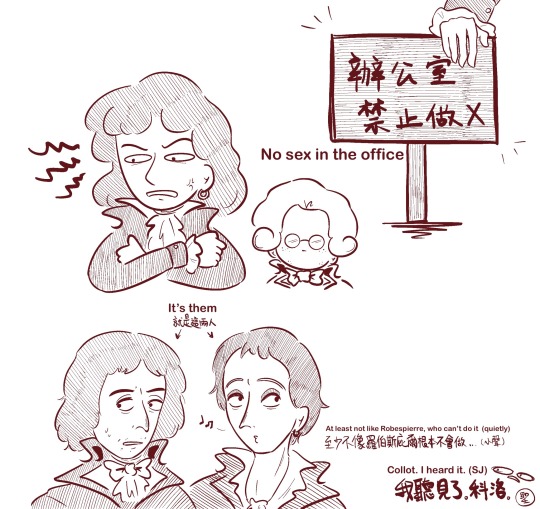

I hate that they are such a perfect match😩
(I am tired of changing handwriting into English, please allow me to use typing)
75 notes
·
View notes
Text
Some time ago in an excellent reblog by Brissot in which each of the good additions was added for which I would like to thank you all, I became a "lawyer" for Marie Antoinette by trying to defend her on quite a few points while not denying her errors and her betrayal (if you want I can give you this post). This got me an idea: I plan to try to do one on Manon Roland and Billaud Varennes, who do you want me to do first (for the moment I do not yet have sufficient information on Jacques Roux and I have taken a certain way of defending people like Momoro, Chaumette, Ronsin in my post the difference in treatment between the Indulgents and the Hébertists, Cordeliers). If you want me to write about another well-known character, let me know (on the other hand, I do not defend a Fouché, a Carrier, Tallien, Fréron,Barras,Collot, Barere, a Hébert and it would be very difficult to take a defence for La Fayette or even Napoléon for me).
29 notes
·
View notes
Text
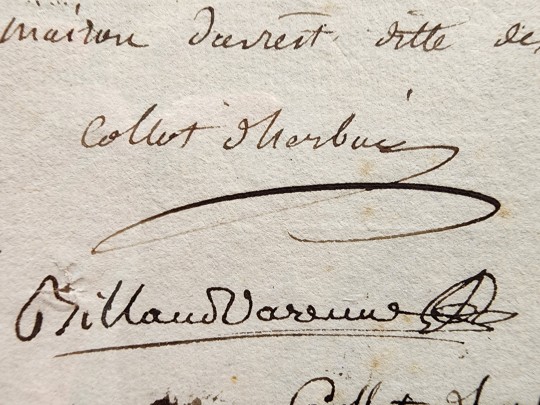
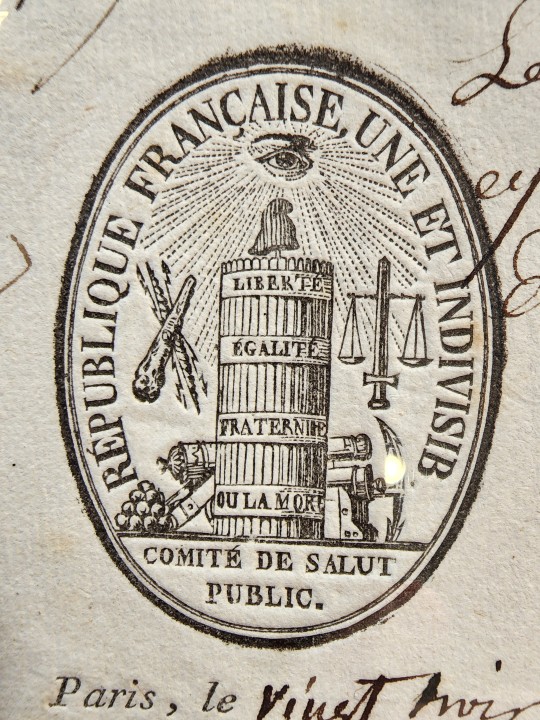




OMG THE ACTUAL CPS ARREST WARRANT THAT I BOUGHT IS HERE
(McPhee already helped me make arrangements to donate it to the Frev museum in Vizille!)
196 notes
·
View notes
Text
This site compiled their addresses here though Barère's page is missing (here are some of his addresses), Lindet's address is different than the one give here, and though some mail was sent to Couthon where Robespierre lived, I think he had another address too? (Hérault is also just not listed but the site is centered around Thermidor.)

Copy-pasted below for convenience. I added their birthdates and astrological signs (for those who care about that):
Jean-Baptiste Robert Lindet
Age : Né à Bernay (Eure), 48 ans en thermidor. [2 mai 1746 ♉]
Adresse : 68, rue de la Sourdière.
Métier : Avocat
Fonctions : Député de l’Eure, membre du Comité de salut public du 6 avril 1793 au 7 octobre 1794
Antoine Louis Léon de Saint-Just
Age: Né à Décize, 26 ans en Thermidor an II [25 août 1767 ♍]
Adresse: 3, rue Caumartin, 2ème étage (depuis mars 1794), à la même adresse que Thuillier. Il demeurait auparavant à l’hôtel des États-Unis, rue Gaillon.
Fonction(s): Député de l’Aisne à la Convention depuis le 5 septembre 1792, membre du Comité de Salut Public depuis le 10 juin 1793.
Georges-Auguste Couthon
Age : Né à Orcet, 38 ans en thermidor [22 décembre 1755 ♑]
Adresse : 366, rue Saint Honoré
Profession : Avocat
Fonction(s) : Elu député du Puy-de-Dôme à la Convention le 6 septembre 1792. Membre du Comité de salut public du 10 juin 1793 au 9 Thermidor an II.
André Jeanbon, dit JEAN BON SAINT-ANDRÉ
Age : Né à Montauban, 45 ans en thermidor [25 février 1749 ♓]
Adresse : 7 rue Gaillon
Profession : Marin, puis pasteur
Fonction(s) : Elu député du Lot à la Convention le 5 septembre 1792, membre du Comité de salut public depuis le 10 juin 1793. Fréquemment en mission pour superviser les opérations maritimes, il est absent de Paris le 9-Thermidor.
Pierre-Louis Prieur, dit PRIEUR de la MARNE
Age : Né à Sommesous (Marne), 37 ans en thermidor [1er août 1756 ♌]
Surnom : Appelé Prieur de la Marne (pour le différencier de Prieur de la Côte-d’Or)
Adresse : 11, rue Helvetius
Métier : Avocat
Fonction(s) : Député de la Marne à la Convention depuis le 3 septembre 1792, membre du Comité de salut public du 10 juillet 1793 au 13 thermidor an II (31 juillet 1794), puis à nouveau du 15 vendémiaire au 15 pluviôse an III (6 octobre 1794-3 février 1795).
Absent de Paris au moment du 9-Thermidor.
Maximilien Marie Isidore de Robespierre
Age : Né à Arras, 36 ans en thermidor. [6 mai 1758 ♉]
Adresse : 366 rue Saint-Honoré (numérotation actuelle : 398)
Métier : Avocat
Fonction(s) : Député de Paris à la Convention nationale depuis le 5 septembre 1792 ; membre du Comité de salut public depuis le 27 juillet 1793
Claude-Antoine Prieur-Duvernois, dit PRIEUR de la CÔTE-d'OR
Age : Né à Auxonne, 30 ans en thermidor [22 décembre 1763 ♑]
Surnom : Appelé Prieur de la Côte-d’Or (pour le différencier de Prieur de la Marne)
Adresse : 5, rue Caumartin
Profession : Ingénieur militaire
Fonction(s) : Elu député de la Côte-d’Or à la Convention le 5 septembre 1792. Membre du Comité de salut public du 14 août 1793 au 16 vendémiaire an III (7 octobre 1794).
Lazare Nicolas Marguerite Carnot
Age : Né à Nolay, 41 ans en thermidor. [13 mai 1753 ♉]
Adresse : 2 rue Florentin
Métier : Mathématicien, physicien, militaire
Fonction(s) : Elu député du Pas-de-Calais à la Convention nationale le 5 septembre 1792 ; membre du Comité de salut public depuis le 14 août 1793, il le quitte le 7 octobre 1794 mais y siège à nouveau un mois plus tard, jusqu’au 6 mars 1795.
Jacques-Nicolas Billaud, dit BILLAUD-VARENNE
Age : Né à La Rochelle, 38 ans en Thermidor an II [23 avril 1756 ♉]
Adresse : 40 rue Saint-André-des-Arts
Métier : Avocat
Fonction(s) : Député de Paris à la Convention depuis le 7 septembre 1792, membre du Comité de Salut Public depuis le 5 septembre 1793
Jean-Marie Collot, dit COLLOT d'HERBOIS
Age : Né à Paris, 45 ans en Thermidor an II [19 juin 1749 ♊]
Adresse : 4 rue Favart (3ème étage)
Métier : Acteur, directeur de théâtre
Fonction(s) : Elu député de Paris à la Convention le 6 septembre 1792, membre du Comité de Salut Public depuis le 5 septembre 1793.
#the csp#committee of public safety#comité de salut public#antoine saint just#maximilien robespierre#robert lindet#lazare carnot#claude antoine prieur#jacques nicolas billaud varenne#collot d'herbois#georges couthon#andré jeanbon saint andré#pierre louis prieur#prieur duvernois#prieur de la côte d'or#prieur de la marne#jeanbon saint-andré#bertrand barère
36 notes
·
View notes
Text
𝐀𝐧𝐭𝐨𝐢𝐧𝐞 𝐒𝐚𝐢𝐧𝐭-𝐉𝐮𝐬𝐭
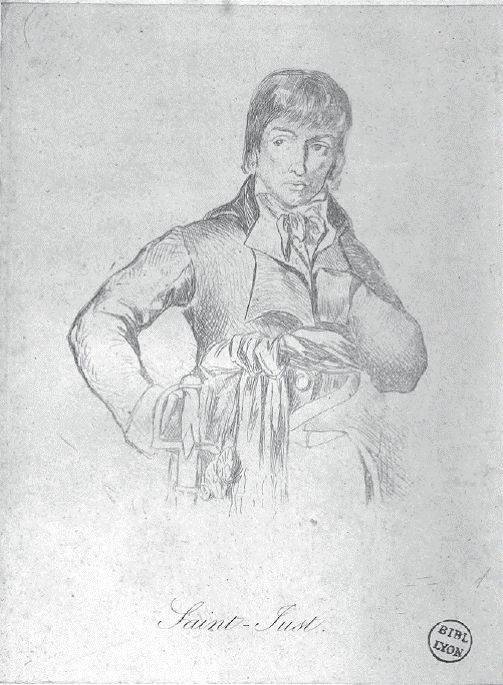
A sketch for antoine saint-just perhaps in one of his revolutionary war missions ( because he is holding a sword here so idk for sure it's just I think that's him during a mission .. nothing confirmed so don't take what I say as an absolute truth, and so sorry I couldn't provide more enough infos about this drawing and if anyone can do please, you are more than welcome to do that ).
#frev#french revolution#saint just#*chef's kiss* art 🌌#antoine saint just#for a moment i thought he was Billaud-Varenne and idk why
55 notes
·
View notes
Note
(its the TMI anon from earlier) This feels like a fever dream but I remember hearing that Marat wrote a pamphlet about how he had a virtuous early life so he said he never jerked off like people his age would (better confession than the guy who said he did it at church ig...I would have taken that to the grave. How can one say that with no shame?). I'm curious about Herault's oversharing too now that you've mentioned it
OOh, oh of course, how could I forget Billaud-Varenne's story of experimenting with other boys, being asked to repent but getting horny at a statue of Madonna nursing baby Jesus and doing self pleasure as a result? (I think it's supposed to be a ~fictional work? But still).
Marat I am not sure where he talked about it, although "not jerking off" was seen as a sign of pride - they believed masturbation was wrong (unlike, say, visiting prostitutes).
Hérault, sadly, did not overshare (full disclosure: I would love to read his oversharing, tbh. But there's not much (?) Unless you count the mess that is "The Theory of Ambition").
29 notes
·
View notes
Text

An elder-version Billaud? Well, the facial features in this portrait are so much alike. And from this portrait, he did not look serene like Prieur or Carnot.
I don't find any other resources to prove that the portrait may be mislabeled.
Found it here:
15 notes
·
View notes
Note
What caused the conflict between Robespierre and his supporters and Thermidorians that led to the events of 27/28th July? Everyone keeps saying different things
If we’re talking about a specific event that lead directly to July 27, the answer to me is pretty simple — it was the speech Robespierre held the day right before it, in which he called for new proscriptions against deputies in the Convention, the Committee of Public Safety (CPS) and the Committee of General Security (CGS), without being clear about exactly which ones he was targeting (even after explicately having been asked to to do so right after the speech was finished). If dissent between the robespierrists and other deputies, as well as more longgoing plans to undermine the former, had existed already before this speech was held, what ultimately happened on July 27 was not a result of these as much as something improvised in less than 24 hours in response to the sudden crisis it had caused by making everyone fear they might be on Robespierre’s list.
If we’re talking more about the underlying motives which made the situation on July 26-28 happen in the first place, for Robespierre’s part, he had grown convinced that the Convention and the two government committees contained conspirators within their midst. Exactly which people he suspected to be part of this conspiracy is hard to know for sure, seeing as he, as already stated, didn’t make himself clear enough in the speech (I’ve speculated a bit on which people I think it’s most likely he had in mind in this post). It is equally dubious whether Robespierre’s collegues at the CPS to some extent had supported his views or how much this new conspiracy was his own hobby horse. Regardless, Robespierre believed the conspirators had to be unveiled and crushed at any price, and, after openly having expressed his fears about them a couple of times at the Jacobin club, he finally decided to openly ask the Convention to take action.
When it comes to the people who overthrew Robespierre, once it was over and done, they would almost all give the same answer as to why they had acted the way they had acted — Robespierre was either acting like or aspiring to become a tyrant/dictator, and they killed him in order to put a stop to this authoritarian project. While I wouldn’t dismiss a fear like this to be nothing but a post construction, it can nevertheless also be established that, when looking closer at these guys’ activities shortly before thermidor, many can be revealed to have had motives grounded in personal dissatisfactions and/or fears of Robespierre as much as any eventual noble intentions. Some examples can be seen below:
Tallien (spoke against Robespierre during the session of 9 thermidor, was one of ten deputies to have signed the pampleth Conjuration formée dès le 5 préréal [sic] par neuf représentants du peuple contre Maximilien Robespierre, pour le poignarder en plein senat released shortly after thermidor) — Openly denounced by Robespierre on June 12 on the grounds of being ”one of those who speak incessantly with terror, and publicly of the guillotine, as something that concerns them, to debase and disturb the National Convention.” His mistress has been imprisoned since May 22 (the warrant for her arrest was actually written by Robespierre himself, but idk if Tallien was aware of that) and he is in dire need to get her out of jail. In his memoirs, Fouché claims that Tallien was one of several deputies he in the weeks leading up to thermidor would tell: ”you are on the list, you are on the list as well as myself, I am certain of it!” no doubt alarming the latter.
Fouché (Pointed to by several contemporaries as the leader of/important for the conspiracy. Did however not play an active role during July 27-28) — was recalled from his mission in Lyon on March 27by a rather frosty decree written by Robespierre. After returning, Fouché possibly had a private meeting with him where he would have been scolded for his conduct (though interestingly, on April 8, Robespierre is recorded to have ”praised” Fouché after the latter had read a report regarding his activities in Lyon…) He has also come under suspicion for his alleged atheism and ties to certain hébertists (most importantly Ronsin who had been his collegue in Lyon before getting executed alongside the hébertists in March 1794). On July 14, Fouché was openly attacked by Robespierre, who called him ”the leader of the conspiracy which we have to thwart" and got him expelled from the jacobins. If Fouché wasn’t already plotting Robespierre’s downfall at that point he surely must have started doing so after this incident.
Billaud-Varennes (spoke against Robespierre during the session of 9 thermidor) — Indirectly denounced by Robespierre in his final speech, both through the phrase ”why do those who told you once that we are walking on a volcano think that we walk on only roses today?” and the suggestion to purge members of the CPS. Booed down and driven out of the Jacobin Club under shouts of ”the conspirators to the guillotine” when Robespierre rerread said speech there on the evening of July 26, which probably gave him a very strong feeling that he was on the menu and would be executed if Robespierre was not. Claimed after thermidor to during a CPS meeting loudly have accused Robespierre and Couthon of pushing through the law of 22 prairial without anyone else in the committee having been involved, leading to the session becoming so stormy that the windows had to be closed.
Collot d’Herbois (spoke against Robespierre during the session of 9 thermidor, was also chairholder during this session) — Driven out of the Jacobin Club under shouts of ”to the guillotine” at the same time as Billaud-Varennes. According to one report, this was not before he had thrown himself before Robespierre’s feet and begged him to reunite with the CPS. Had been tipped off by Fouché on April 20 that Robespierre was investigating the latter for his actions in Lyon, which would make him guilty by association. Claimed in his defence (March 1 1795) to once have been declared ”traitor and conspirator” by Robespierre, ”because I had strongly supported the useful and wise proposal that Lindet made, to require horses and carriages in each section of Paris, in order to provide for the supplies of the armies.” According to Michel Biard’s Collot d’Herbois: légendes noires et révolutions(1995) Collot and Billaud’s abandonment of Robespierre is best understood through their perception of his political role than it is by any eventual differences in political or religious matters.
Vadier, Élie Lacoste (spoke against Robespierre during the session of 9 thermidor, Lacoste being the one to demand an arrest warrant against Augustin Robespierre) — these were both members of the CGS. Robespierre had explicately denounced said committee, and particulary its agents, in his July 26 speech, ending by demanding it lose its autonomy to instead become subserviant to the CPS. The CGS had however already earlier that year been robbed of some of its special attributes, when, on April 20, a CPS driven police bureau, mainly directed by Robespierre, Couthon and Saint-Just, had been introduced, something we might imagiene also became an object of irritation. Two months later, Robespierre had also personally taken care one of the committee’s cases (the Catherine Théot affair, which I wrote about more at length here) was taken away from them to instead be run by robespierrists. The handling of said affair was also something Robespierre explicately denounced the CGS for in his July 26 speech. It is also commonly stated that Vadier disagreed with Robespierre’s religious ideas, he himself being a militant atheist, but I’m not sure for what the source for that is.
Fréron (spoke against Robespierre during the session of 9 thermidor, was one of ten deputies to have signed the pampleth Conjuration formée dès le 5 préréal…) — was never openly denounced by Robespierre as far as I’m aware, nor was the decree recalling him from his mission in Marseille, on the grounds of having gone to far when wanting to rename the city, been neither authored nor signed by him. We do however know Fréron had been close to the dantonists executed in April, thereby making revenge and/or fear of being seen as ”guilty by association” a possible motive. The same thing can be said for other men traditionally described as dantonists that we know worked against Robespierre, such as Bourdon de l’Oise, Thuriot, Guffroy etc.
Guffroy (was one of ten deputies to have signed the pampleth Conjuration formée dès le 5 préréal…) — disillusioned by the fact Robespierre and the rest of the CPS have failed/chosen not to act on the representative on mission Joseph Lebon after Guffroy multiple times had denounced him to them.
Bourdon d’Oise (spoke against Robespierre during the session of 9 thermidor) — Had spoken against the law of 22 prairial both June 10, 11 and 12, earning himself a reprimand from Robespierre on the latter of these dates. According to the memoirs of Pierre Nicolas Berryer, it was after this session Bourdon started plotting for Robespierre’s downfall, seeing in it ”a struggle to the death” between the two, and planning to on his own stab him to death with a cutlass.
Lecointre (author behind the pampleth Conjuration formée dès le 5 préréal [sic] par neuf représentants du peuple contre Maximilien Robespierre, pour le poignarder en plein senat released shortly after thermidor) — Openly spoke against the law of 22 prairial when it was introduced on June 10, asking for an adjournment and applauding the deputy Ruamps when he said he would blow his brains out was the law to pass. In the above mentioned pampleth, he wrote that it was when he heard rumors Robespierre was the only person behind the law he decided to start working to undermine him.
So as can be seen, there’s not really a single motive for the conspirators, but a whole bunch of them. To understand them better, it is also important to remember just how the political climate looked like by the summer of 1794. I think it’s safe to assume the trials and executions of the hébertists and dantonists in March and April had unnerved several of the Convention deputies, the death of Danton in particular being seen as evidence that anyone could be declared a counter-revolutionary. Then just two months later, the law of 22 prairial gets introduced by Couthon and Robespierre, a law which strips the Convention of its exclusive rights to bring its own members to trial. This just two days after Robespierre has presided over the Festival of the Supreme Being, an event which had put several members a bit off. With all these things combined, I don’t think it’s fully unreasonable people would be willing to believe Robespierre was up to no good/planning to make himself a dictator, especially if someone was actively spreading/confirming that fear. It’s also important to keep in mind that on both sides of the conflict, the deputies were overworked, tired, irrational and suffering from the summer heat. I think thermidor is therefore best understood if we assume none of the men involved in it were necessarily on their most rational behaviour when things went down.
#sorry this took forever to get published#robespierre#fouché#tallien#billaud-varennes#collot d’herbois#frev#laurent lecointre#ask
26 notes
·
View notes
Text
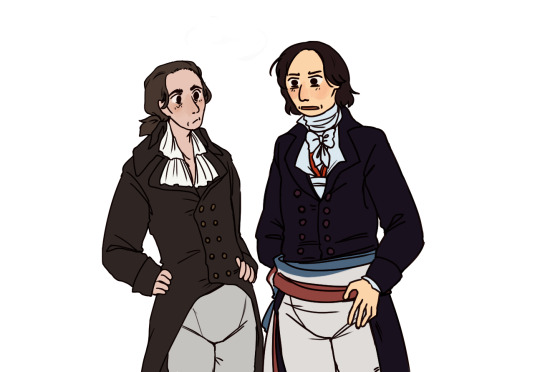
the worst duo ever
36 notes
·
View notes
Text
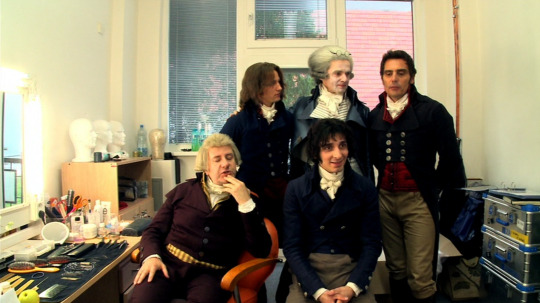
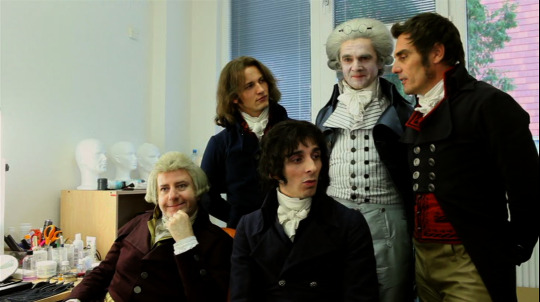

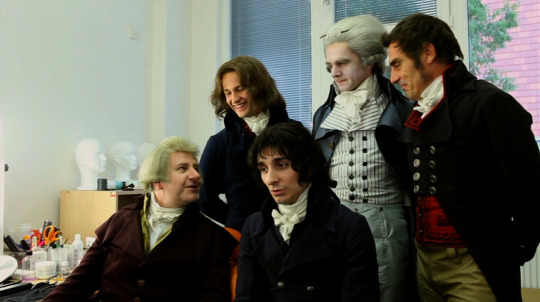

Les Visteurs 3: La Révolution (2016), Behind the scenes
#fouché looking so much younger than robespierre is CRIMINAL#nicolas vaude was 20y too old to play robespierre but what they did to him with that make up was also criminal#and what they did to couthon with that wig xd#billaud-varenne had no business being this cute?#but look at Saint-Just just looooook
52 notes
·
View notes
Text

Second in the Mapping the CPS series: a map of Ancien Regime France with the places of birth of our notorious third CPS. On the side, you can see a timeline with the date of birth of each of the members.
Some fun facts:
The average age of the Committee of Public Safety in July 1793 was 37, with Lindet being the oldest at 47 and Saint-Just the youngest at 25.
Couthon and Prieur (Cote d'Or) share a birthday on the 22 of December.
Three of the members (Lindet, Robespierre and Carnot) were born in May (so the CPS has 3 birthdays coming up!)
The only deputy of Paris that was actually born in Paris was Collot.
I'm surprised Billaud-Varenne wasn't sent on mission to the West (instead of Prieur de Marne and Saint-André) since he was born in La Rochelle, had family there and lived there until he was 26.
Saint-André shares a birthplace with Olympe de Gouges (a rather small town called Montauban)
Where all the members were born:
Robert Lindet: Bernay
Jean-Marie Collot d'Herbois: Paris
André Jeanbon Saint-André: Montauban
Lazare Carnot: Nolay
Bertrand Barère:Tarbes
Georges Couthon: Orcet
Jacques Billaud-Varenne: La Rochelle
Pierre-Louis Prieur de la Marne: Sommesous
Maximilien Robespierre: Arras
Marie-Jean Hérault de Séchelles: Paris
Claude-Antoine Prieur de la Côte-d’Or: Auxonne
Louis Antoine Saint-Just: Decize
#frev#french revolution#robespierre#committee of public safety#saint just#lindet#collot#saint-andre#lazare carnot#barere#couthon#billaud varenne#prieur#herault
64 notes
·
View notes
Text

Today is Billaud Varenne’s birthday
give him a sleeping Collot and let him do whatever he wants 😋
20 notes
·
View notes